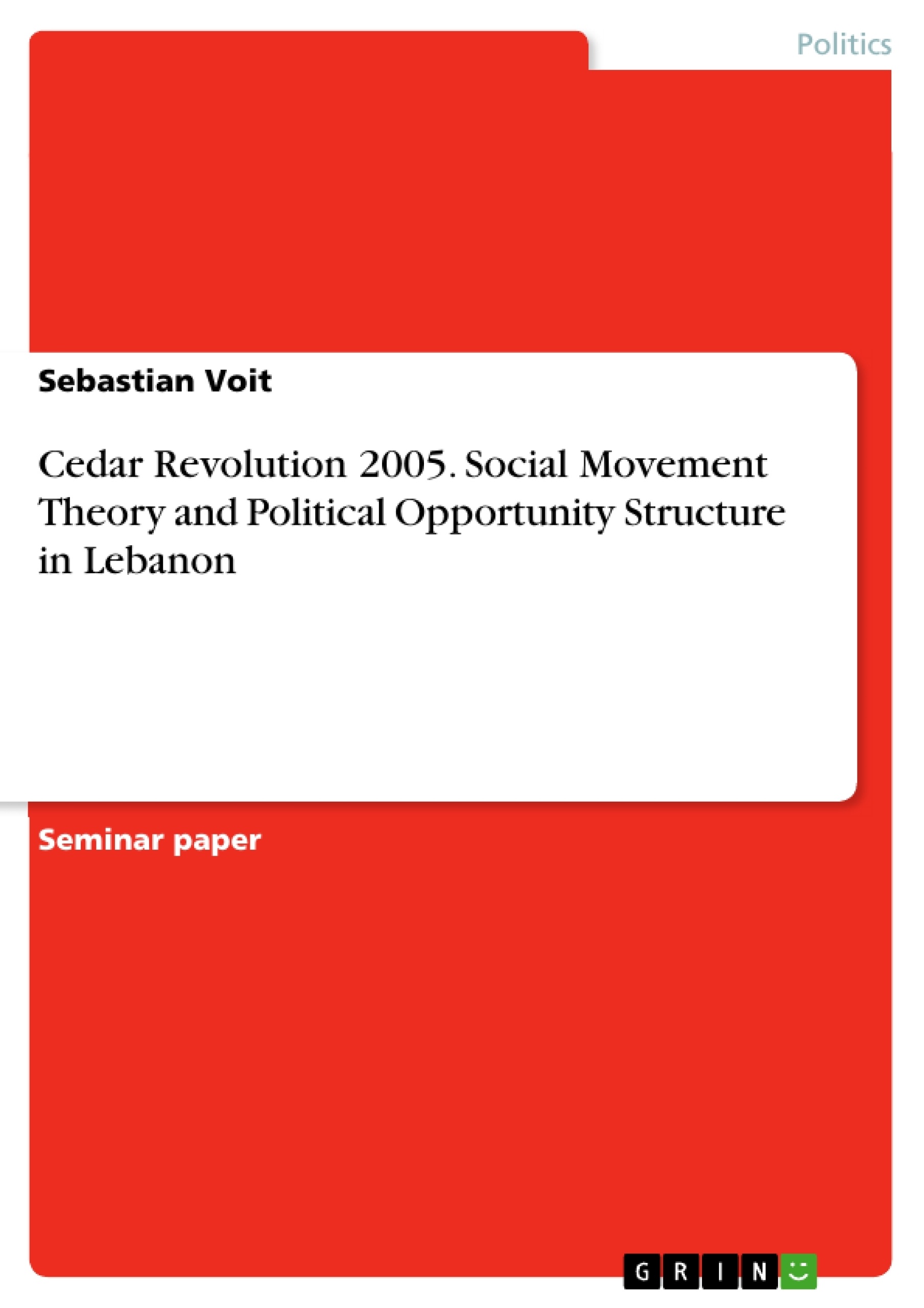The social movement theory was being developed over a long period of time and still is, as an interdisciplinary study of the social sciences. Many scientists as well as scholars used this theory in order to explain why mobilization occurs, the emergence of movements, their revolutionary characteristics in general and the different types of movements in their different stages in specific.
It deals with the political opportunity structure and constraints for a movement within a system or regime, the existing resources for a movement or its members to mobilize for their or its claims and last but not least the framing of its goals and demands in order to gain as much support as possible from the public and political sphere.
Furthermore subject of these studies is the effect and the outcomes of mass mobilization and collective action on social, political and cultural spheres. There are different perspectives, in which e.g. the political opportunity structure is used as a variable to examine the social developments and the political outcomes and consequences. As the most important scholars who laid the framework for the today known theory have to be named Charles Tilly, Sidney Tarrow, Michael Mann, Doug McAdam.
Contents
1. Outline of the Social Movement Theory, Specified on the Political Opportunity Structure
2. Political Opportunity Structure in Lebanon
2.1 Opportunities and Threats
2.2 The Political System of Lebanon
2.3 Turning Point 2000: Emerging Opportunities
2.3.1 Change of External Factors in the Region
2.3.1.1 Syrian Predominance in Lebanon: Closure of the System and Loss of Legitimacy
2.3.1.2 Withdrawal of the IDF and death of Ḥāfiẓ al-Asad: Opening New Opportunities
2.4 External Factors and their Impact on Internal Affairs
2.4.1 September 11 2001 and USA´s War on Terrorism: Syria Becomes an Enemy
2.4.2 International Community: UN Resolution 1559
2.5 Change of Internal Factors: Availability of Allies and Foreign Powers
3. Challenging the Syrian Presence: Culminated in the Cedar Revolution
3.1 Internal: Émile Laḥḥūd and Rafīq al-Ḥarīrī
3.1.1 The Military Power Network around President Laḥḥūd and Syria
3.1.2 Withdrawal of Syrian Forces from Lebanon
3.1.3 The Economic and Political Power Network around Rafīq al-Ḥarīrī
3.2 Assassination of Rafīq al-Ḥarīrī and Emerging Protests: Splits in Elites and Trigger of the Independence Intifada
3.2.1 Pro-Syrian March 8 Movement
3.2.2 Anti-Syrian March 14 Alliance
3.3 Protests and New Coalition-Building in Opposition to Elites Affiliated with Syria and Western Powers
4. Conclusion
5. Bibliography
- Quote paper
- Sebastian Voit (Author), 2013, Cedar Revolution 2005. Social Movement Theory and Political Opportunity Structure in Lebanon, Munich, GRIN Verlag, https://www.grin.com/document/301243
-

-

-

-
Upload your own papers! Earn money and win an iPhone X. -

-
Upload your own papers! Earn money and win an iPhone X. -

-
Upload your own papers! Earn money and win an iPhone X. -

-
Upload your own papers! Earn money and win an iPhone X. -

-
Upload your own papers! Earn money and win an iPhone X. -

-
Upload your own papers! Earn money and win an iPhone X. -

-
Upload your own papers! Earn money and win an iPhone X.

